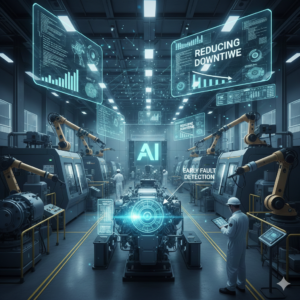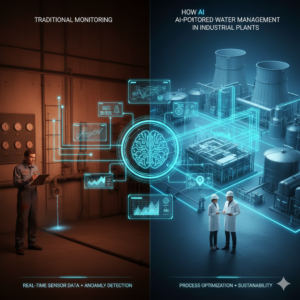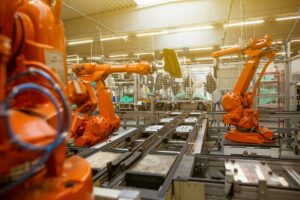Edge artificial intelligence is making devices smarter and faster.

Edge artificial intelligence is making devices smarter and faster.
For a very long time, the term “artificial intelligence” has been linked to enormous cloud servers, extensive databases, and high-performance computer facilities. In the year 2025, however, the development of edge artificial intelligence is causing a shift in the way that robots think and behave. AI is currently being incorporated directly into devices, making them smarter, quicker, and more autonomous than they have ever been before. This is a departure from the traditional method of depending entirely on external servers. Edge artificial intelligence is redefining the way in which technology interacts with the environment in real time. This includes anything from automobile and industrial machinery to wearables and smartphones.
1. Can You Explain What Edge AI Is?
Edge artificial intelligence is the technique of executing artificial intelligence models directly on local devices (the “edge”) rather than transferring data to centralized cloud servers for processing. This is referred to as “edge artificial intelligence.” Devices are able to process information quickly, so eliminating delays and enhancing performance. This is made possible by relocating computing closer to the location where data is created.
2. The Transition from the Cloud to the Edge
Computing on the cloud has made a significant contribution to the expansion of artificial intelligence (AI), but it is not without its drawbacks, including network latency, bandwidth costs, and privacy threats. Artificial intelligence at the edge solves these challenges by carrying out tasks locally. When it comes to applications like as autonomous cars, robots, and healthcare, where choices need to be made in milliseconds, this change is extremely crucial.
3. Response Times That Are Quicker
The one benefit of Edge AI that stands out the most is its speed. It is now possible for devices such as smart cameras, drones, and Internet of Things sensors to do data analysis in real time, therefore offering real-time insights without having to wait for cloud servers to reply. In domains where safety is of the utmost importance, such as autonomous vehicles and medical monitoring systems, this very low latency is absolutely necessary.
4. Improvements in Confidentiality and Safety
When data is processed locally, it eliminates the need to send sensitive information across networks in every situation. By way of illustration, a smart home security camera that utilizes Edge AI is able to detect recognized faces without transmitting photos to servers located outside the house. This provides a higher degree of control over personal data while also reducing susceptibility to cyber risks.
5. Cost reductions and increased energy efficiency
Artificial intelligence at the edge minimizes reliance on continual internet connections and reduces bandwidth consumption. Rather of transmitting massive volumes of raw data to the cloud, gadgets only transmit the insights that are pertinent to the situation. By doing so, not only does this assist companies save money on infrastructure expenditures, but it also helps them preserve energy.
6. Devices that are Smarter Now and Now
Voice assistants and wearable health trackers are just two examples of the kind of products that are benefiting from Edge AI’s ability to provide more customized and responsive experiences. A wristwatch, for instance, is able to detect abnormal cardiac beats in real time and promptly inform users, even if the smartwatch is not linked to the internet.
7. Artificial Intelligence at the Edge of Autonomous Vehicles
One of the most compelling instances of Edge AI in action is the development of self-driving automobiles. They do vast quantities of data processing on the vehicle itself, using sensors, cameras, and radar to gather information. It would be too sluggish to rely on cloud processing, but with artificial intelligence onboard, automobiles are able to make split-second judgments to safeguard the safety of their passengers.
8. Applications throughout the Industrial and Business Sectors
Edge artificial intelligence is being widely used by manufacturing facilities and supply chains in order to monitor equipment, identify issues, and improve output. Without having to wait for cloud analysis, real-time decision-making may help reduce expensive downtime and enhance productivity in these kinds of scenarios.
9. Technology Advances in Healthcare
Edge artificial intelligence-enabled medical equipment may provide assistance to medical professionals by analyzing scans, monitoring vital signs, and identifying irregularities in real time. As an example, portable diagnostic instruments have the capability to provide results in real time during emergency treatment, which is a situation in which speed is often a matter of life and death.
10. Obstacles Presented by Edge Artificial Intelligence
The use of artificial intelligence at the edge of networks is not without its challenges, which include restricted processing power, storage limits, and the need for specialized processors such as AI accelerators. One of the most important challenges that academics and engineers are attempting to conquer is finding a balance between performance and energy efficiency.
11. The Function of 5G in Artificial Intelligence at the Edge
When it is necessary for devices to interface with cloud servers, high-speed 5G networks may provide for speedy connection, which is a complement to edge artificial intelligence. Edge artificial intelligence and 5G connectivity together make it possible to create hybrid systems that, when required, combine strong cloud resources with local computing.
12. The Prospects for Artificial Intelligence at the Edge
With the continued development of hardware, artificial intelligence at the edge will become more accessible and prevalent. It may be possible for future devices to run complex models locally, which would not only enable quicker processing but also autonomous learning without depending largely on updates that are stored on the cloud. The implementation of this might bring about a revolution in linked homes, smart cities, and perhaps personal robots.
Edge artificial intelligence is not only an improvement in technology; rather, it represents a fundamental revolution in the way that gadgets function. It makes it possible to make decisions more quickly, in a safer environment, and with more efficiency by bringing intelligence closer to the source of the data. Edge artificial intelligence is setting the groundwork for a world that is more connected and responsive, whether it is via the powering of autonomous cars, the improvement of healthcare diagnostics, or the creation of really intelligent products for smart devices.




